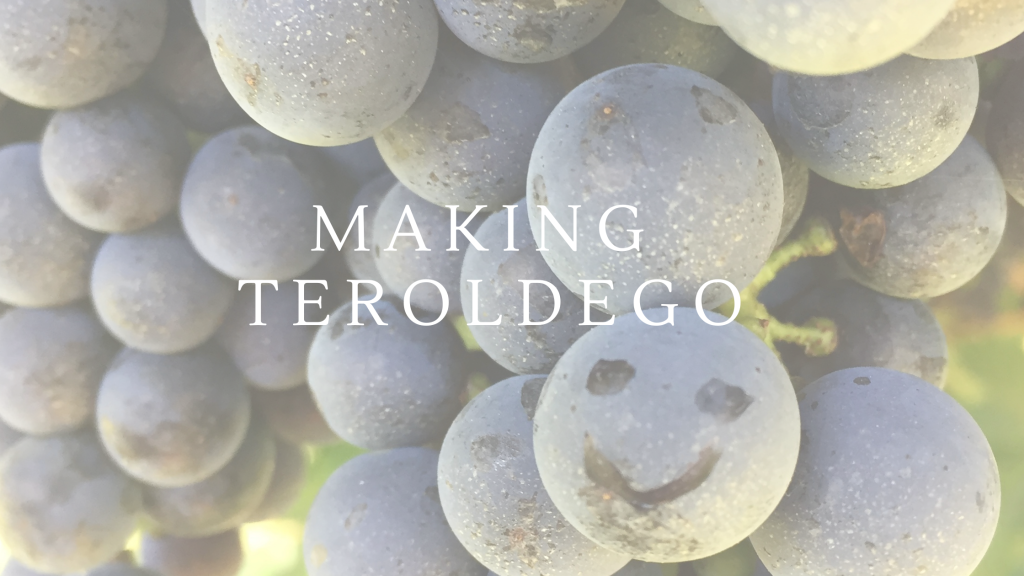Teroldego is a varietal that not everyone (or hardly anyone) has heard of. This makes it particularly difficult when you move to Italy to start making wine and everyone asks “what wine” and the only response you have in 2013 is “teroldego”. But I have come to love Teroldego not only for what the wine is like, but also the history behind it.
What is Teroldego?
The name comes from being “the gold of South Tyrol” because it became one of the most important wines of the Austrian Hungarian Empire and is located in the bottom corner of South Tyrol, Trentino Ato-Adige, Italy. Teroldego is a red grape native to The Piana Rotaliana (a valley at the foot of the Dolomite mountains) which thrives off hot summers and cold winters. The grape comes in massive juicy bunches weighing potentially kilos each.
The grapes are grown in the typical pergola style from the region to help protect them from the potentially intense weather conditions of Trentino (winds, hail, snow, floods). Teroldego is full bodied, deep purple wine, full of red fruit flavours with spicy peppery notes. Generally, it’s a variety that can be used in many styles because of its characteristics, best young or aged.
How do we make our Teroldego?
Usually picked at the end of September or beginning of October, it is directly de-stemmed and lands on the sorting table where many hands pick out the unwanted things from the table. From there the grapes go into large fermenters called “brentone” in Italian or in wood or steel tanks. The grapes are then inoculated and “punched down” or basically mixed with a wooden stick, three times a day for hopefully ten days. When the tanks are finished fermenting, we press an inox filter into the grape skins and suck all the wine from the skins. All of the skins are then put into the press to extract the remaining liquid. The wine then goes into Malolactic fermentation, and once that is complete (a couple of weeks) it is racked off of the lees into a mix of wood tonneau (500 litre barrels) and steel tanks. There the wine sits for 18 months (but we also have a reserve that rests for 24 months). Afterwards the wine is blended together, filtered, put in bottle, where it will again rest for at least three months before sale. Although every year is different, you will have a big bold juicy red wine that definitely stands up for itself.
